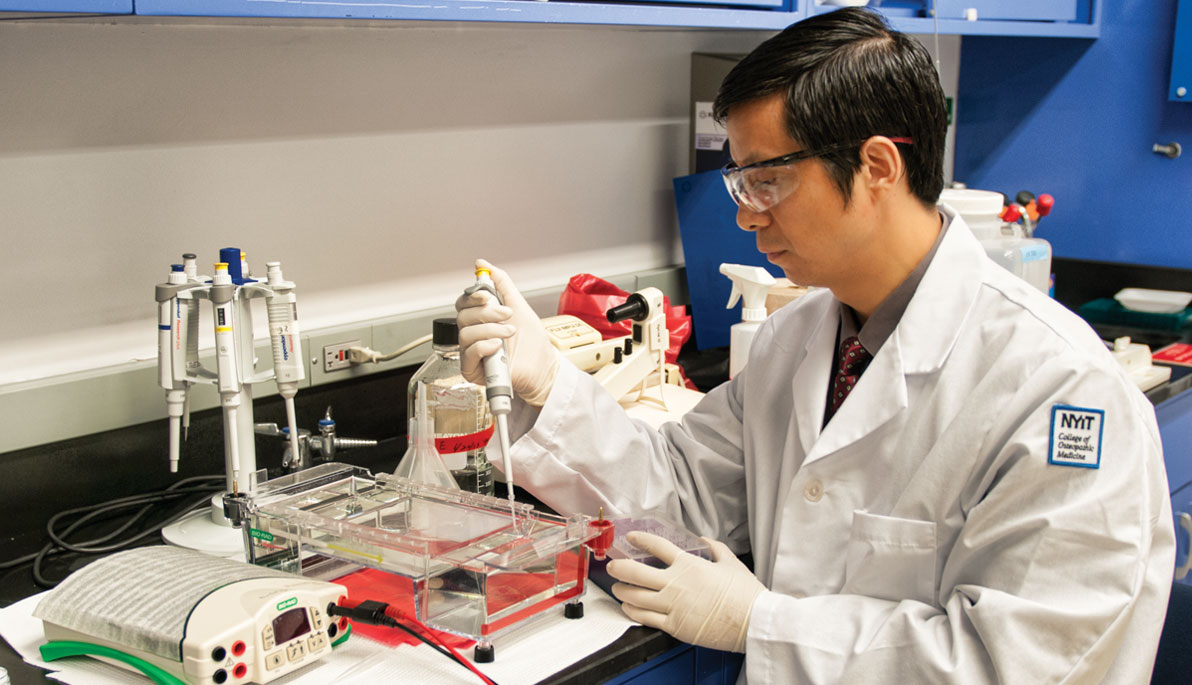News
How to Be Heart Healthy
February 20, 2015
NYIT College of Osteopathic Medicine Associate Professor Qiangrong Liang, Ph.D., won a National Institutes of Health grant last year to study the effects of reducing caloric intake on the heart. As part of American Heart Month in February, The Box asked Liang about the inner workings of the heart and tips for keeping it healthy.
What's the most fascinating fact about the human heart?
The human heart beats continuously whether people are awake or asleep. If the average lifetime of men and women is 78 years, the human heart will beat more than 2.5 billion times. Imagine keeping your car running straight for 78 years! Isn't that amazing?
What are the best ways we can care for our hearts?
The No. 1 treatment of all diseases is prevention. The best way to maintain a healthy heart is to be happy, eat right, and exercise. Numerous human and animal studies have demonstrated that physical inactivity and excessive calorie intake are two major risk factors for heart disease. Conversely, exercise and caloric restriction each can effectively delay the onset and attenuate the severity of heart disease. Importantly, both interventions in combination can exert more powerful cardio-protective effects than either exercise or dietary control alone. Whenever possible, you want to do both to maximize the cardiac benefits.
Can we overcome genetic problems?
Genetic factors do play a role in heart diseases. For example, if several members of your family have suffered from heart disease at young ages, your risk of developing it will be much higher than the general population. However, you can still protect yourself by taking good care of your heart, as the development of heart disease involves many different factors, not just your family history.
Maintaining a positive attitude, exercising, and being mindful of your diet will help strengthen your heart and slow the development of heart disease even if these activities cannot change your family history or genetics.




